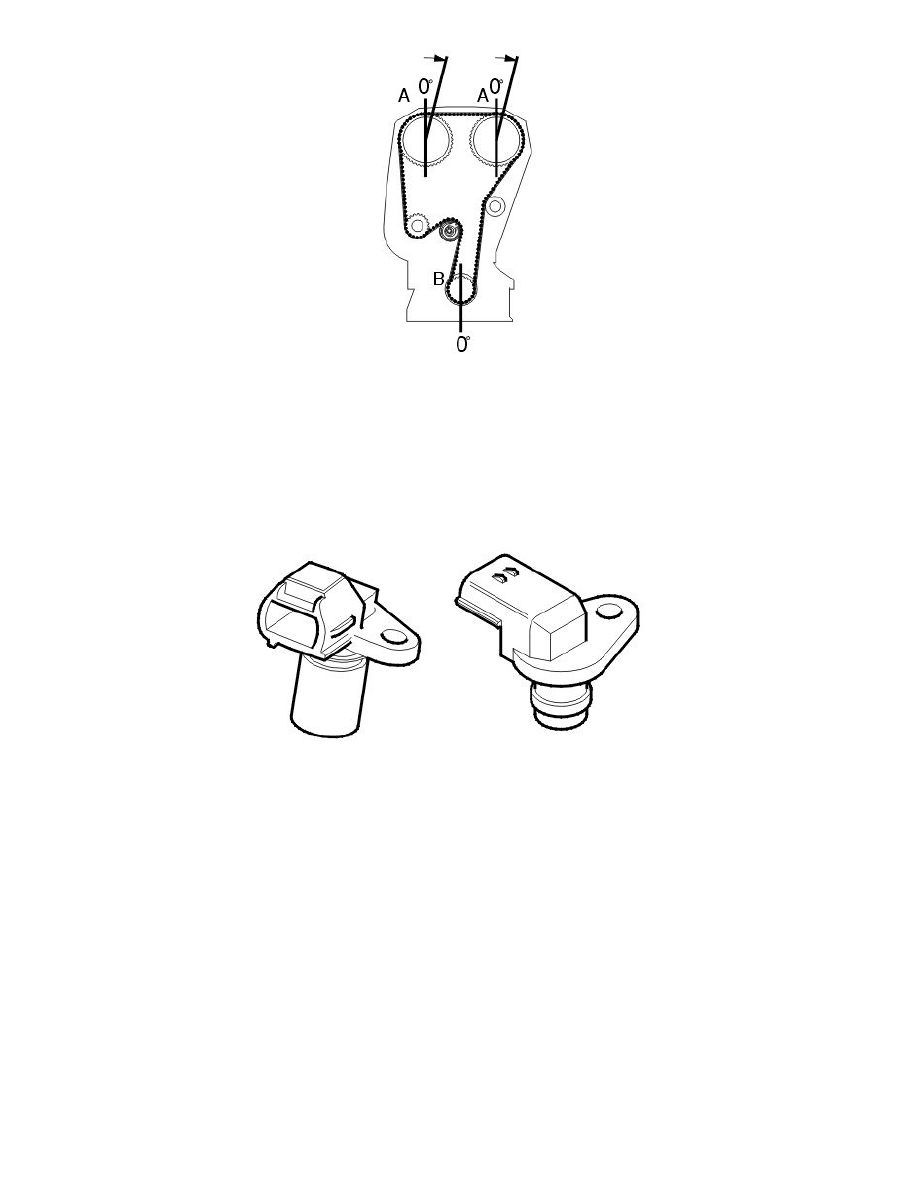V50 T5 AWD L5-2.5L Turbo VIN 67 B5254T7 (2008)

When the camshaft (A) is set at the factory, it is aligned with the position of the crankshaft (B). The position of the camshaft in relation to the crankshaft
is designated the camshaft 0 position. During camshaft (CVVT) control, the 0 position of the camshaft is advanced so that the opening and closing of
the intake and exhaust valves can be changed to match the camshaft. Engine performance can be increased, idle quality increased and emissions reduced
by regulating the camshaft timing changes.
There are diagnostics for this function. See also: Camshaft diagnostics (CVVT) See: Powertrain Management/Computers and Control
Systems/Description and Operation/Camshaft Diagnostics (CVVT)
Detecting the position of the camshaft (camshaft timing changes)
In order to detect the position of the camshaft (camshaft timing) in relation to the crankshaft, the engine control module (ECM) uses the signals from the
engine speed (RPM) sensor (the position of the crankshaft) and from the camshaft position (CMP) sensor (the position of the camshaft). The control
module uses these two signals to determine the position of the camshaft in relation to the position of the crankshaft.
